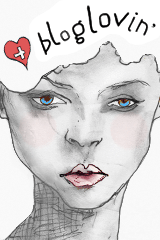Just kidding! I'm sure you'd be just the right amount of cool to enjoy this treatment!
What I received was a straight peel using 55% lactic and salicylic acid with a pH of around 1.5. The percentage is how MUCH of the hydroxy acids used in the product and the pH is how DEEP it can penetrate. This is not the focus of this post, however it should make a great discussion later I'm thinking!I chose lactic and salicylic blend because I have an oily skin type but experience some sensitivities on my cheeks. I also experience some hyperpigmentation that occurred when I was pregnant with my daughter. Don't remember what hyperpigmentation is? Reread my post :) And don't worry, your skin specialist can help determine what is the plan of action for you.
After the chemical peel, my esthetician used a "snowball" liquid nitrogen, also known as dry ice, wrapped in a couple of cotton 4x4s and swept it gently and smoothly over my face. In some spas they actually have equipment to place the dry ice in a wand, as seen in the image to the left. The use of the dry ice in my treatment is often referred to as cryogenic therapy. It is also used in physical therapy and dermatology offices, obviously with some different purposes but still great results. In those instances it might be used directly on an area of the skin in hopes to detroy the cells, this is buffered and lightly brushed across the face. It was really soothing and relaxing, I understand why people use regular ice in their regimen but this was at another level! (PLEASE DO NOT TRY TO DO THIS AT HOME! A SKIN CARE PROFESSIONAL SHOULD PERFORM THIS TREATMENT)
First of all, you may be asking why the chemical peel?
- Chemical peels are great for chemically dissolving the intercellular "cement" that holds skin cells together and to the surface of the skin. If this isn't done, then sometimes our skin's texture can feel and look uneven, our pores can be clogged with this debris, and can appear flakey.
- As these acids penetrate, they in turn stimulate blood circulation which oxygenates and nourishes the surrounding skin cells.
- Bonus! Encourages cell turnover.
- AND collagen and elastin production!
Next, what are the benefits of the cryogenic therapy?
- Used as an anti-inflammatory
- Soothes pain
- Promotes the constriction of capillaries
- Increases cell turnover (in turn helping with treatment of hyperpigmentation) by destroying the cells of the outermost layer.
- Tightens pores (which can benefit acneic clients)
Who else would benefit from this treatment?
Those of you who have hyperpigmentation, anyone receiving resurfacing treatments, acneic clients, and even in dermatology offices a similar procedure can be used to remove warts, moles, skin tags, etc. Contraindications for this treatment would be:
- Impaired sensation. Patients cannot report when they become anesthetic from cold. Tissue damage occurs slightly below temperatures that produce numbness.
- Impaired circulation: tissue damage may result from vasoconstriction.
- Open wounds after 48 hours.
- Hypersensitivity to cold, such as Raynaud's phenomenon, cold urticaria, cryoglobulinemia, and paroxysmal cold hemoglobinuria.
- Varicose veins
- Diabetes
- Anemia
- Heart disease
- Chills
- Skin conditions (rashes, open wounds)
- Cancer
- Additionally, ice should also not be used for patients who have rheumatoid arthritis, Raynaud’s Syndrome, cold allergic conditions, paralysis, or areas of impaired sensation.
More can be read here.
All in all, I loved the results! My skin feels super soft and my breakouts are gone. As for my hyperpigmentation, it's definitely lighter but I think I'm going to go another round with this same treatment here in a month. Maybe I need to include before and after pictures this time huh? Thanks again for sticking with me, always have a good time researching more and sharing.
Here's the video I posted earlier and more info on this amazing therapy!
Any skin questions that you might have or have always been interested in? I need your help! Give me topics to go over! If not, I'll do whatever I want to and that may get a little all over the place. And if you have a blog, I'd love to read yours. So add me and I'll do the same!









No comments:
Post a Comment